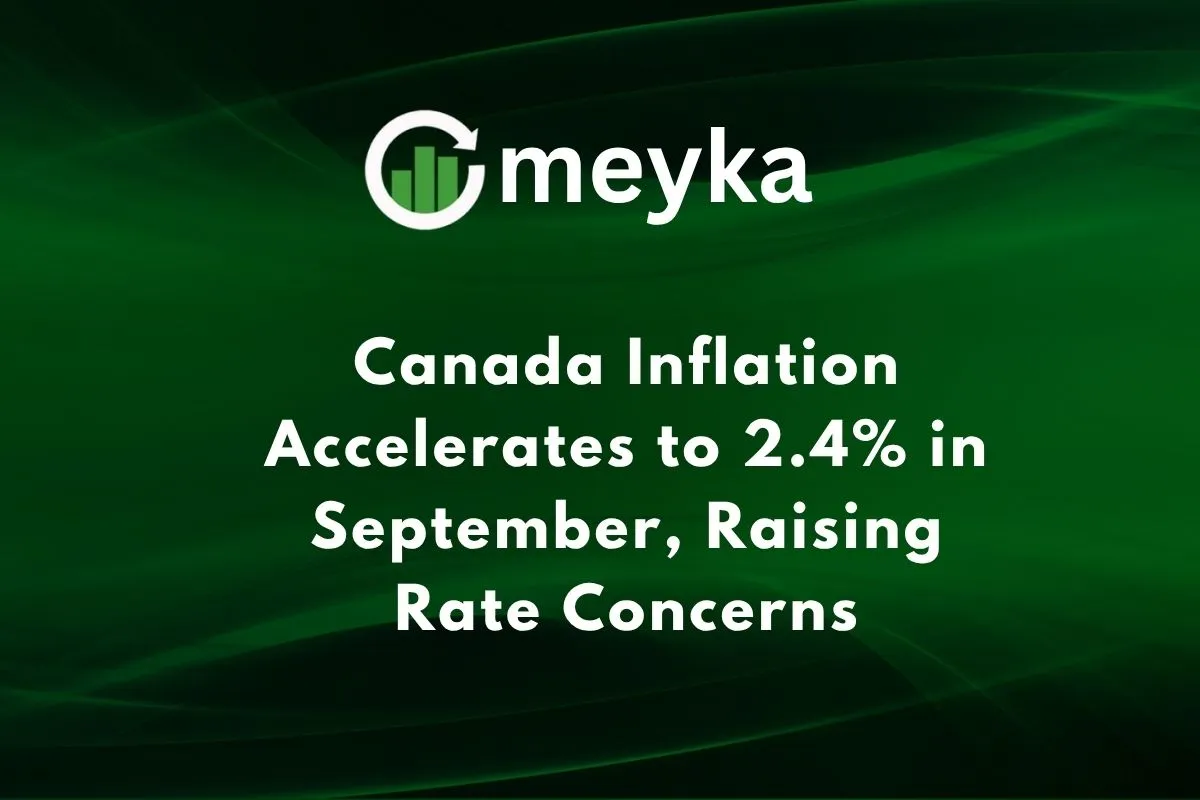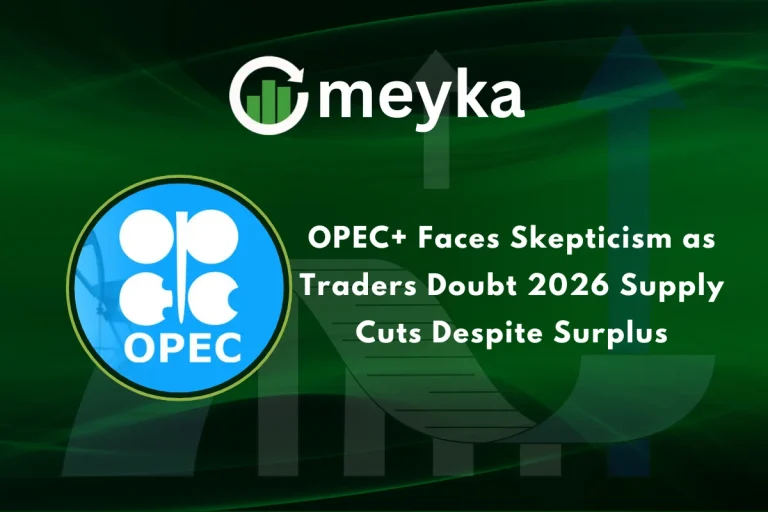Canada Inflation Accelerates to 2.4% in September, Raising Rate Concerns
We’ve just seen the annual inflation rate in Canada jump to 2.4% in September 2025, up from 1.9% in August. That may sound like a small number, but for households, businesses, and policy-makers, it sends a clear signal: price growth is not yet under control. When everyday costs like food and shelter rise faster, we all feel it. In this case, the steeper increases in grocery bills and rent contributed strongly to the surge.
At the same time, the expected drop in gasoline prices didn’t happen as much as last year, which also helped raise the overall number. In short, inflation is climbing, and that raises an important question for the Bank of Canada: Will we see higher interest rates, or will they hold back to avoid squeezing the economy? We will walk through what’s behind this number, what it means for Canadians, and why the coming months matter more than ever.
Breakdown of September Inflation Data
So, what made the 2.4% figure tick up?
- One major driver: food prices. Grocery-store purchases rose about 4% year-on-year, pushing food inflation to roughly 3.8%.
- Shelter costs (rent, home-ownership parts) also climbed. Rents jumped by 4.8% in September, which lifted shelter inflation to about 2.6%.
- Gasoline: While fuel prices were still down compared with a year ago, the drop was smaller than in the same month last year, so their usual “drag” on inflation was weaker.
- Core inflation measures matter because they strip out the most volatile bits (like energy and food). In September, the “CPI-median” stood at about 3.2%, and the “CPI-trim” at about 3.1%, both signs that “underlying” inflation is still quite warm.
- For comparison, i August, the annual rate was 1.9%.
These numbers show we’re not simply dealing with short-term blips: a broad swathe of prices is moving up. That raises questions about how long inflation might stay ahead of the central bank’s 2% target.
Bank of Canada’s Perspective
We all know the Bank of Canada’s job: steer inflation toward that 1–3% target range and try to keep the economy balanced. But when inflation picks up, they face a tougher call.
- The Bank had cut its policy rate to 2.50% (with the Bank Rate at 2.75%) in mid-September.
- With inflation at 2.4% and core inflation still in the low-3% range, the Bank may hesitate to cut rates further, or might hold off until it’s confident inflation is under better control.
- Economists had been expecting a rate cut around late October, but the upward surprise in inflation complicates things.
In short, we (as Canadians) are watching how the Bank weighs growth risks (economy stalling) against inflation risks (prices rising too fast).
Market and Investor Reactions
It’s not just policy-makers watching: financial markets are reacting, too.
- The Canadian dollar strengthened a bit against the U.S. dollar after the latest inflation numbers.
- Bond yields (especially short-term) ticked up because the possibility of a rate cut is now slightly less certain.
- For investors in consumer sectors (groceries, real estate), the inflation pick-up may signal stronger cost pressures ahead. At the same time, sectors sensitive to interest rates (housing, auto loans, large consumer purchases) may feel the pinch if rates stay higher for longer.
Thus, the “Canada Inflation” story isn’t just about numbers; it’s influencing how people invest, borrow, and spend.
Economic Context
To understand why inflation is behaving this way, we need to look at the broader economy.
- Growth has been modest, but the labor market has been tight, which can drive wage pressures and, in turn, push prices up.
- Compared with the United States, Canada faces similar inflation pressures, but the exchange rate and oil/commodity prices add extra layers. The strengthening loonie earlier in the year helped ease some import-price pressures.
- Supply-side issues: food prices have been rising partly due to global disruptions and adverse weather in some regions. For example, grocery store inflation has increased noticeably.
- With fuel prices not falling as fast as last year, the usual “help” from that sector is smaller. This dynamic matters because energy costs ripple through many areas (transport, manufacturing, shipping).
In short, inflation is not just “too high”; the underlying sources span housing, food, energy, and imported goods.
Policy and Public Impact
What does this all mean for everyday Canadians?
- If inflation stays above 2% and interest rates remain higher, mortgage rates and loan costs may stay elevated. That could make big-ticket purchases or debt servicing more expensive.
- For renters and home-buyers, rising shelter costs (rent up ~4.8%) may imply more pressure on household budgets.
- Grocery bills: With food inflation around ~4%, families may feel the pinch, especially if incomes aren’t keeping pace.
- On the business side, firms may face higher input costs (food ingredients, fuel, wages) and might pass those on to customers. That could set off a chain reaction of still-higher prices.
- Government and policy: the federal and provincial governments may feel pressure to respond with relief measures (tax rebates, subsidies) or risk public dissatisfaction.
So, as “we” go through our daily lives, these macro numbers translate into real choices: how much to spend, borrow, save, and what trade-offs to make.
Expert Outlook
Where are things headed? Here are some of the key signs and scenarios:
- Many economists expect inflation to remain around 3% or slightly above for the near term, before gradually drifting toward the 2% goal.
- The biggest variables to watch: wage growth, energy/fuel prices, rental/housing supply, and imported inflation (currency and global commodity prices).
- If inflation remains sticky, the Bank of Canada may delay rate cuts, or even consider raising rates to contain expectations of broader price rises.
- Two scenarios:
- Soft landing: inflation gradually declines, rates fall gently, economy stays steady.
- Sticky inflation: prices stay elevated, forcing the Bank to hold rates or raise them, which could slow growth and hit sectors like housing or consumer credit harder.
- Bottom line: We are in a phase where the battle is not over. Inflation may have eased from its peak years ago, but the current 2.4% still sits above the mid-range of the Bank’s target and signals risks.
Conclusion
The 2.4% inflation figure for September is a clear marker: while Canada has made progress, the journey isn’t done. The “Canada Inflation” story shows both comfort (prices not jumping like a decade ago) and caution (prices still rising across many sectors). For the Bank of Canada, it’s a tricky balance: keep rates supportive of growth, yet not so loose that price rises spin out of control.
For Canadians, the message is: monitor costs, understand the trade-offs between spending and saving, and be prepared if interest rates or household cost pressures remain elevated. The coming months will tell whether inflation continues its gentle glide toward 2% or whether it surprises us again by veering upward. Either way, staying informed matters.
Disclaimer:
The content shared by Meyka AI PTY LTD is solely for research and informational purposes. Meyka is not a financial advisory service, and the information provided should not be considered investment or trading advice.






